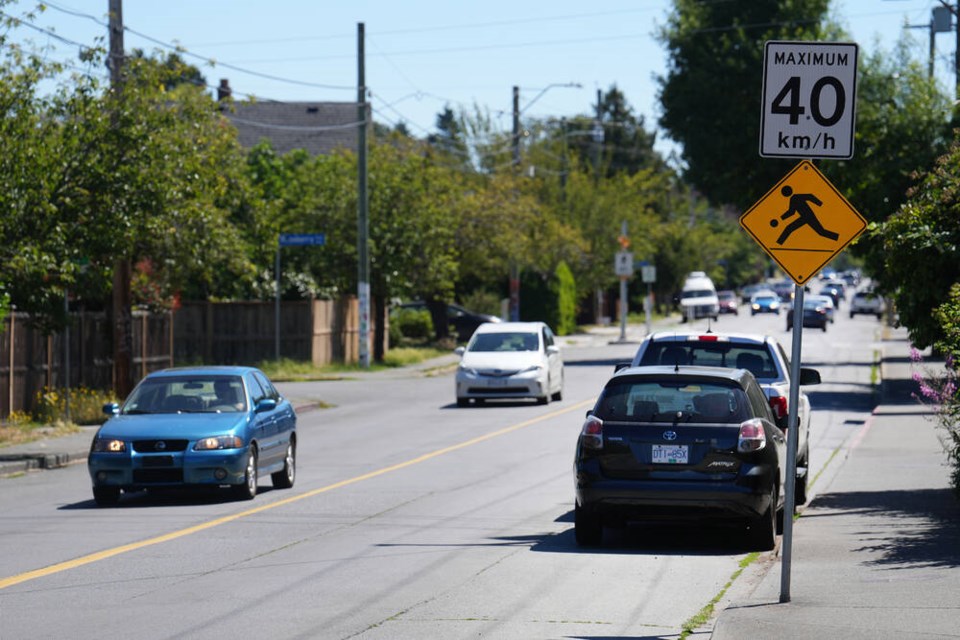City council unanimously adopted a bylaw on Thursday reducing the speed limit for nearly every street in the city to 40 km/h or lower.

There are now only two streets in Victoria where drivers can legally hit speeds up to 50 kilometres an hour.
City council unanimously adopted a bylaw on Thursday reducing the speed limit for nearly every street in the city to 40 km/h or lower.
The only roadways within city limits that will remain at the provincial default of 50 km/h are the sections of Douglas and Blanshard streets north of downtown, between Caledonia Avenue and Tolmie Avenue.
The changes follow direction set in 2022 by the previous Victoria council, which lowered the default speed limit on neighbourhood roads to 30 km/h.
At the time, council excluded arterial and collector streets from lower speed limits, but the updated streets and traffic bylaw will see limits of 40 km/h or lower on arterials such as Bay and Cook streets, secondary arterials such as parts of Dallas Road, Finlayson Street, Government Street and Fort Street, and collector streets such as Belleville Street, Caledonia Avenue, Foul Bay Road and Menzies Street.
City staff say installation of the new speed-limit signs on arterial and collector streets will begin this fall, when all the neighbourhood speed-limit signs have been replaced with the new 30 km/h limit.
Arterial and collector street-sign changes should wrap up by the end of next year, staff said.
The city began in 2022 replacing residential neighbourhood signage with the 30 km/h speed limit, starting from the northern end of the city.
Several capital region municipalities, including Saanich and Esquimalt, have been rolling out lower speed limits in their communities in recent years. Municipal councils have the authority to set speed limits on roads under their jurisdiction.
On the mainland, Vancouver’s city council voted unanimously this week to reduce the speed limit on local streets to 30 km/h, down from the provincial default of 50 km/h.
Victoria has committed to Vision Zero, a road-safety initiative aimed at reducing fatalities through better road design, speed reduction and other measures.
Coun. Chris Coleman said speeders in neighbourhoods are often people who live there. “We tend to think we know our own streets very well, so we have some latitude — but in fact, there is no latitude on these speed requirements.”
Coleman said that once, after Rockland residents complained about traffic violations and lobbied council for more enforcement in the neighbourhood, police did a six-week blitz in the area and found that close to 90 per cent of Rockland Avenue speeders lived in the neighbourhood.
Police enforcement will be a key part in making sure that people stick to the new speed limits, he said.
[email protected]